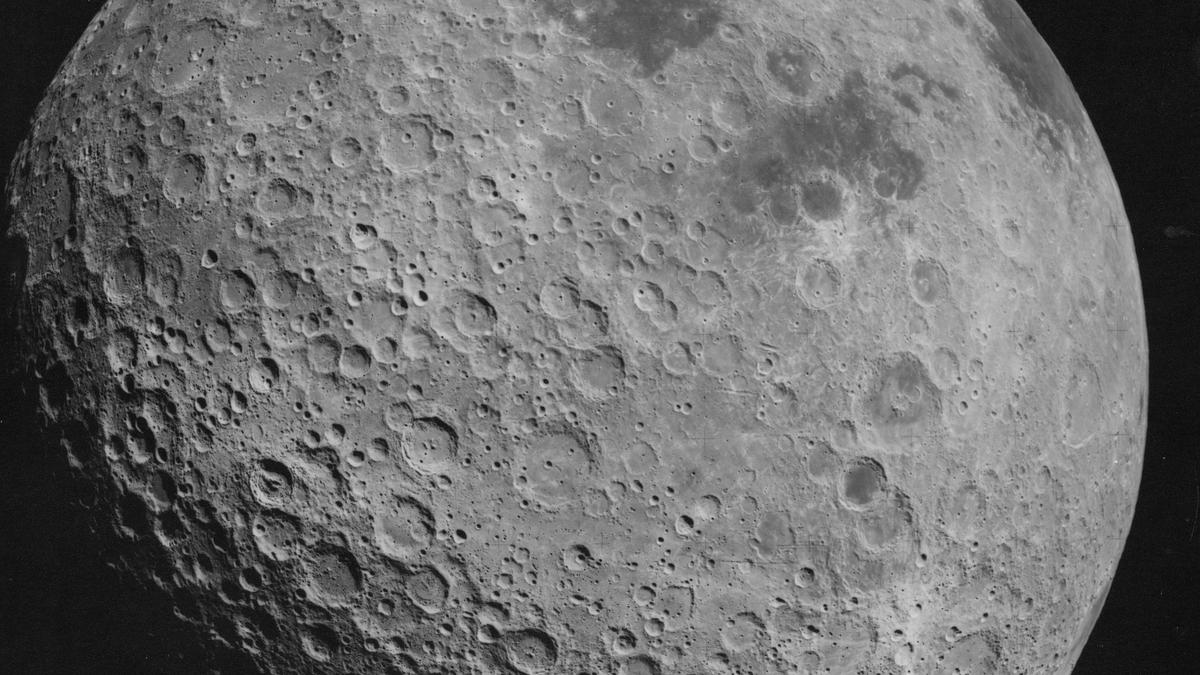The far side of the moon (shown) is more cratered than the near side.
| Photo Credit: NASA
The earth’s moon is tidally locked: one side always faces the earth and the other side always faces away. So when scientists got their first look of the moon’s far side, they were surprised to find it looked very different from the near side.
NASA’s GRAIL mission recently reported small month-on-month changes in the moon’s gravity caused by tides on the earth. When mission scientists processed the data, they found evidence that the moon’s interior is not uniform: the near side seemed to be warmer, softer, and slightly molten. The researchers predicted a temperature difference of 100-200º C between the hemispheres.
Because warmer rock melts more easily, their models suggested there is still a partly molten layer of rock 800-1,250 km beneath the near side surface.
Long ago, this layer could have risen to the surface and erupted to form dark lava plains that dominate the near side. As the interior slowly cooled, the eruptions would have faded 3-4 billion years ago. The moon’s far side crust is thicker, so the magma may never have made it to the surface there.
The findings join others — like meteorites being shielded by the earth on the near side, an uneven distribution of radioactive materials, and quirks in the moon’s ancient formation event — to understand why the earth’s closest cosmic companion is also Janus-faced.
Published – May 24, 2025 01:30 pm IST
